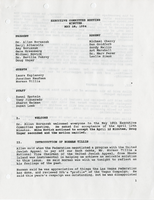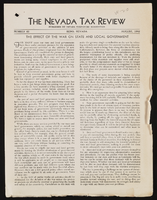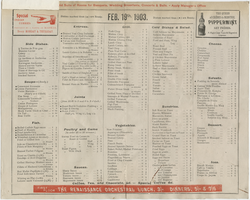Search the Special Collections and Archives Portal
Search Results
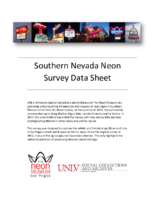
Fishers Inn Motel Neon Survey document, September 16, 2017
Date
Archival Collection
Description
Site address: 3565 Boulder Hwy
Sign owner: Maiya LLC
Sign details: The construction of the motel was in 1963. This location was previously the Comet Motel but the Fisher's bought it in 1987 and changed the name to Fisher's Inn Motel.
Sign condition: 5 - received new paint in 2017
Sign form: Raised roadside sign
Sign-specific description: This sign has a thin white steel beam base with plastic backlit sign that currently advertises ESPN, HBO, Over 150 channels and Free Wifi. Above the reader board is a rectangular (but has a curved portion to the top of it) blue sign that states "FI" on top in a cursive font, underneath in a block white font states "A Fisher's Inn". Underneath "A Fisher's Inn" there is are big yellow "MOTEL" block font letters with a simple "No Vacancy" skeletal neon beneath it. At night the "FI" illuminates yellow, "A Fisher's Inn" green, " MOTEL" red, "NO VACANCY" is blue, but on the top portion of the sign there is white skeletal neon in the shape of possibly a Fisherman's hat.
Sign - type of display: Neon and backlit plastic sign
Sign - media: Steel and plastic
Sign - non-neon treatments: Backlit plastic sign
Sign environment: This motel is on Boulder Highway, close to the 515 and is near other motels and car sales lots.
Sign - date of installation: c. 1987
Sign - date of redesign/move: 2017 painted blue when it used to be green
Sign - artistic significance: There's a good use of multiple colors on this sign. As well as repurposing older signs from previous property has been a major trend for signs in Vegas. Good example of skeletal neon.
Survey - research locations: Assessor's website
Survey - research notes: Bookings website gives hotel info https://www.booking.com/hotel/us/a-fishers- inn-motel.html
Surveyor: Emily Fellmer
Survey - date completed: 2017-09-16
Sign keywords: Neon; Backlit; Plastic; Steel; Roadside
Text

Photograph of the "Mole" Jarva Tunnel Borer at work on the Las Vegas River Mountain Project, Las Vegas, Nevada, circa 1968-1971
Date
Archival Collection
Description
Image
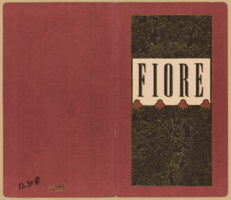
Fiore menus
Date
Archival Collection
Description
From the UNLV University Libraries Menu Collection -- Las Vegas, Nevada restaurants -- Hotel and casino restaurants -- Rio Hotel and Casino file.
Text
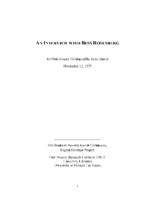
Transcript of interview with Bess Rosenberg by Jerry Masini, November 12, 1975
Date
Archival Collection
Description
Interview with Bess Rosenberg by Jerry Masini on November 12, 1975. In this interview, Rosenberg describes coming to Las Vegas in 1942, and the desert landscape. She gives an in-depth recollection of the first atomic test, and talks about different weather and the seasons in Las Vegas. Rosenberg describes several clubs and hotels around downtown and the recreation at Lake Mead and Mount Charleston.
Text

Interview with Corbin Harney, August 4, 2005
Date
Archival Collection
Description
Text
Jana Wilcox Lavin (Opportunity 180) oral history interview conducted by Kelliann Beavers: transcript
Date
Archival Collection
Description
From the Lincy Institute "Perspectives from the COVID-19 Pandemic" Oral History Project (MS-01178) -- Education sector interviews file.
Text
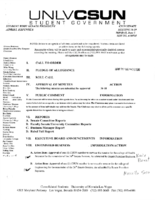
Meeting minutes for Consolidated Student Senate, University of Nevada, Las Vegas, June 05, 2006
Date
Archival Collection
Description
Text

